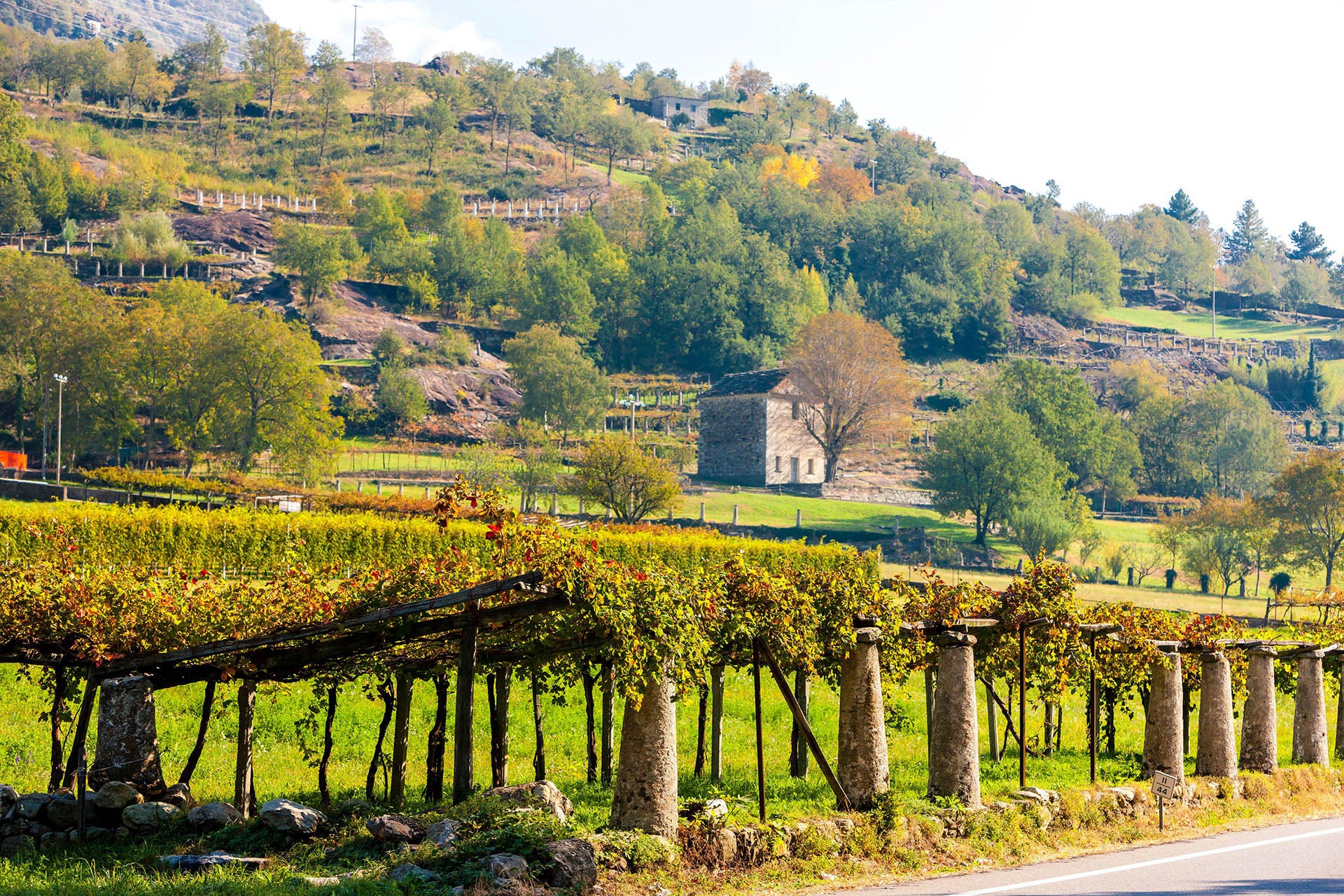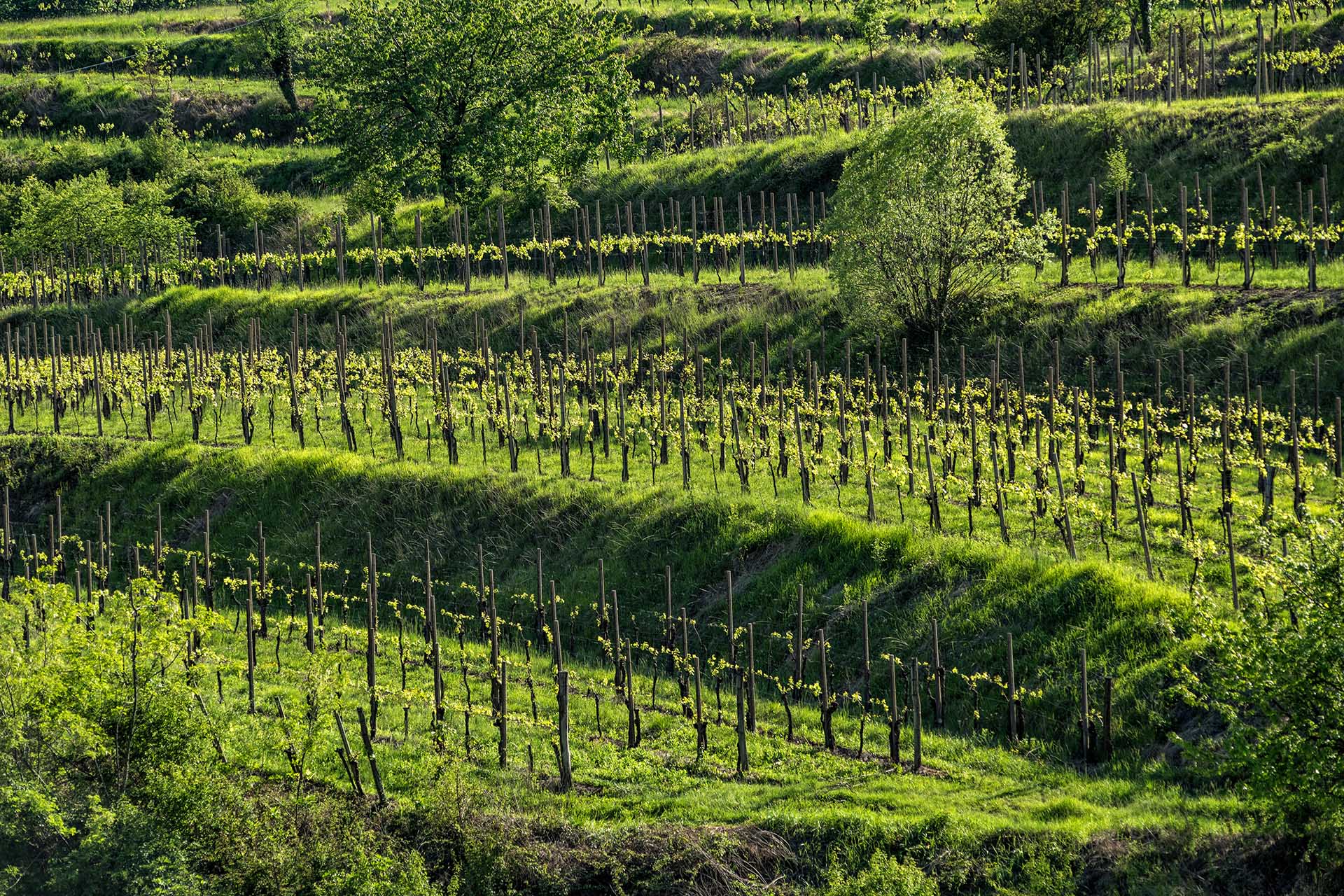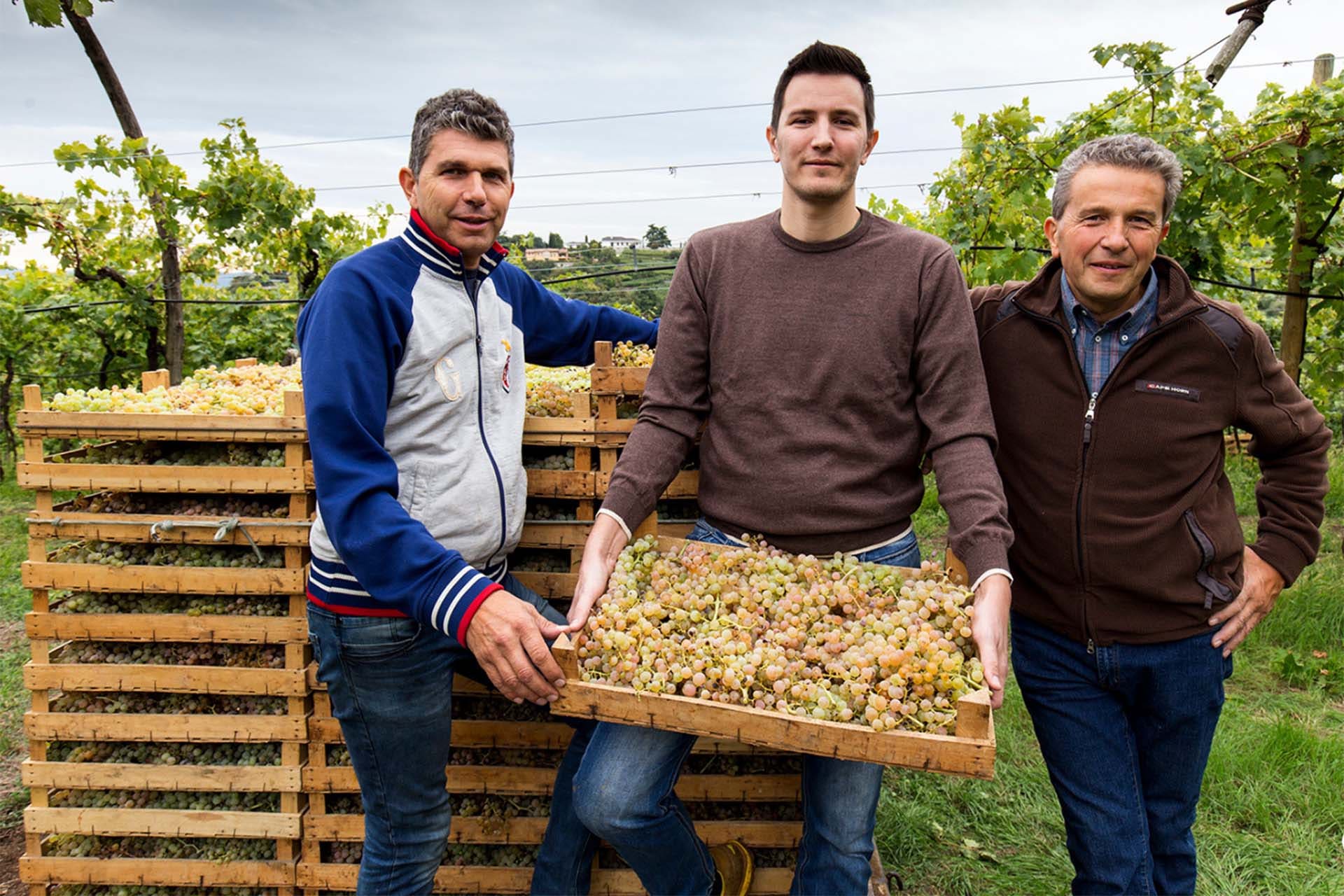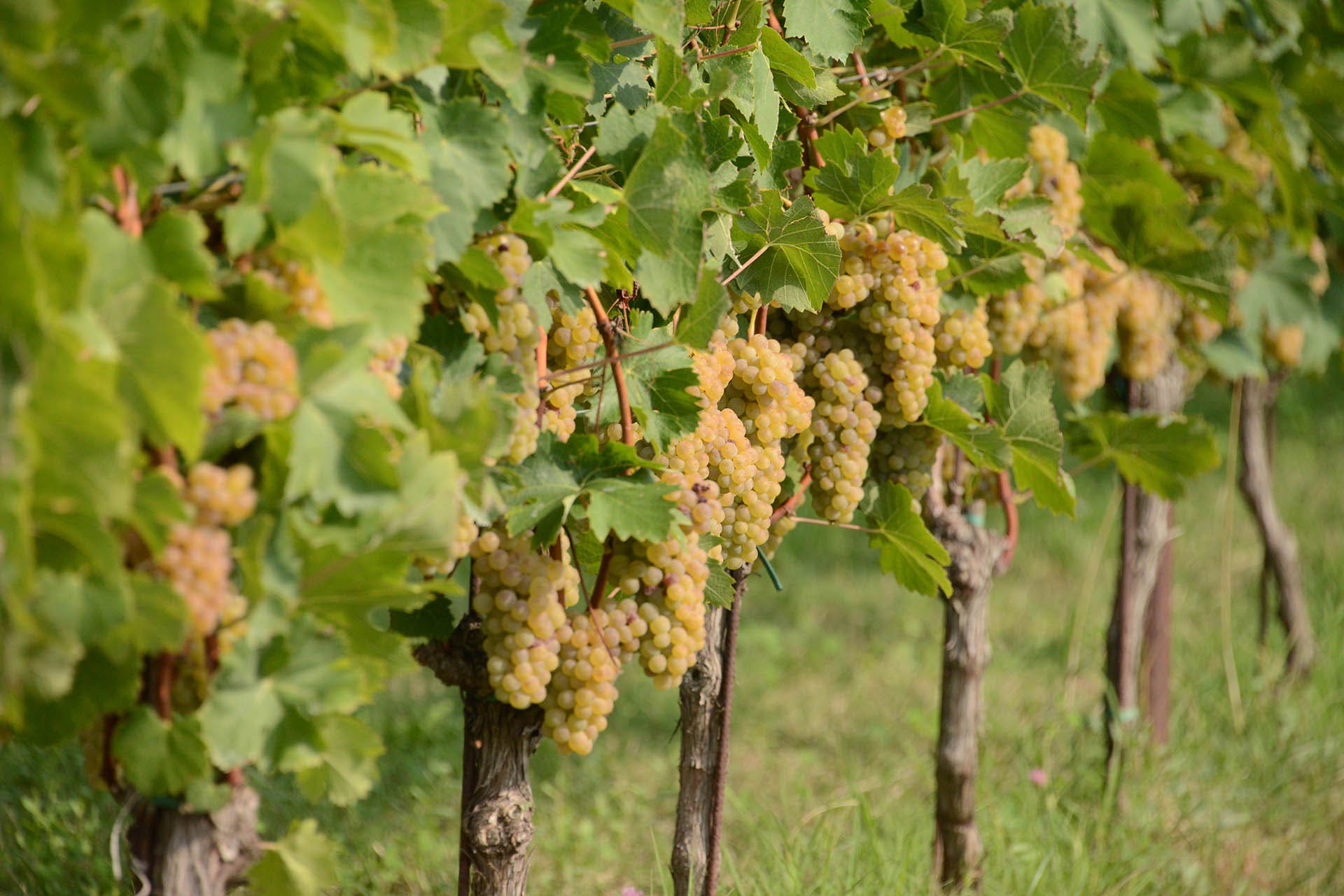Wine Enthusiast |
- Fresh, Crisp and Savory: The Indigenous White Wine Grapes of Northern Italy
- The U.S. Wineries Pursuing Radical Sustainability
- Wine and Paint Nights Foster Camaraderie in More Ways than One
- Three Global Dishes to Make with Homemade (or Store-Bought!) Pizza Dough
| Fresh, Crisp and Savory: The Indigenous White Wine Grapes of Northern Italy Posted: 19 Apr 2021 04:31 AM PDT  Ubiquitous and often uninspiring, Pinot Grigio is the best-known Italian white wine. And while there are some good, and even great, bottlings, Italy has so much more to offer. Producers create excellent wines from non-native Italian grapes like Sauvignon Blanc, Riesling, Pinot Blanc and Kerner, mainly from select areas in northern Italy. However, some of the most exciting white wines from up and down the peninsula come from Italy's native grapes. To explore the expanse of Italian white wines made with indigenous grapes, we start in the north of the country. Blanc de Morgex et de la SalleRegion: Valle d'Aosta  Located beneath the snowy peak of Mont Blanc, the Morgex et de la Salle growing zone in Valle d'Aosta turns out crisp, savory white wines from among the highest vineyards in Europe. Here, in terraced vineyards and on low pergolas, native grape Prié Blanc makes racy, mineral-driven whites with delicate scents reminiscent of Alpine herb and hay. Production is tiny. While Valle d'Aosta Blanc de Morgex et de la Salle is exported to the U.S., it may be hard to find—but it's well worth the effort to hunt down. The producers below are imported to the U.S. via Vinity Wine Company, Cream Wine Company and Jan D'Amore Wines, respectively. Suggested producers: Cave Mont Blanc de Morgex et la Salle, Ermes Pavese, Maison Vevey Albert FriulanoRegion: Friuli–Venezia Giulia  The Friulano grape excels in the hills of Collio and Friuli Colli Orientali in the Friuli–Venezia Giulia region. It was known as Tocai Friulano until 2007, when the European Union forced Italy to relinquish the Tocai name to avoid confusion with Tokaj from Hungary. Wines made with Friulano boast full-bodied finesse and feature aromas and flavors of pear and almond. While it's fresh, it has milder acidity than many other white grapes. Some producers ferment and age in wood to add complexity. Suggested producers: Borgo del Tiglio, Raccaro, Russiz Superiore Ribolla GiallaRegion: Friuli–Venezia Giulia  Ribolla Gialla yields dry, racy wines. When made with traditional white wine vinification methods, the grape offers delicate floral aromas, peach and citrus flavors alongside crisp acidity. Thanks to thick skins, when it's produced with prolonged skin contact and aged in large oak casks, Ribolla Gialla yields more complexity, with a great depth of flavors including dried apricot, honeyed nut and mineral. Suggested producers: Gravner, Radikon, Zuani Soave Classico and SoaveRegion: Veneto  Soave, which hails from Veneto, is often associated with light-bodied, zesty bottlings destined to drink immediately. But the best Soaves, namely Soave Classico and those made exclusively in the hillsides, boast flavor, depth and surprising longevity. To underscore these two distinct styles, the denomination has introduced 33 official vineyard areas. Starting with the 2019 vintage, they're officially known as Unità Geografiche Aggiuntive (UGA), 28 of which are in the Classico zone in the hills between the wine's namesake medieval town and Monforte d'Alpone. Made mainly with Garganega and up to 30% Trebbiano di Soave grapes, the best expressions are elegant and intense. Suggested producers: Gini, Pieropan, Inama CustozaRegion: Veneto  This dry, vibrant white from Veneto is produced in classic and Superiore versions. It's crafted with a flexible blend of varieties, including Garganega, Trebbianello (a local biotype of Friulano), Bianca Fernanda (a local clone of the Cortese grape) as well as Trebbiano Toscano. Producers can also use up to 30% Malvasia, Riesling Italico, Pinot Bianco, Chardonnay and Manzoni. The straight version is delicate, crisp, floral and fruity with added sensations suggesting wild herb. The small amount of Superiore bottlings are creamier, with more intensity and good mid-term aging potential. Suggested Producers: Albino Piona, Cavalchina, Monte del Frà LuganaRegions: Veneto and Lombardy  Made with Turbiana, a native grape grown on the southern shores of Lake Garda, Lugana's growing zone spans the Veneto and Lombardy regions. It comes in five distinct styles. The straight Lugana accounts for about 90% of total production, while other still whites are designated as Superiore or Riserva. It's also produced as a Vendemmia Tardiva (late harvest) and sparkling wine. Crisp and enticingly floral, Lugana has juicy citrus, white stone fruit and almond sensations. Rounder, fuller-bodied Lugana Superiore is aged for one year and shows wild herb and saline notes. Released after two years, Lugana Riserva is elegant and complex, with flinty mineral and spice. Suggested producers: Marangona, Ottella, Tenuta Roveglia Gavi, Erbaluce, Arneis, Nascetta and TimorassoRegion: Piedmont  Better known for its structured reds made with Nebbiolo and Barbera, Piedmont also produces impressive whites from native grapes. Made with the Cortese grape, Gavi is dry, crisp and floral. Meanwhile, Erbaluce is focused and linear, with hawthorn aromas and a light almond close. Closely associated with the hills of Roero, Arneis yields creamy, generous wines that have a nutty finish. Nascetta, whose spiritual home is Novello, was revived in the 1990s after it nearly became extinct. The best expressions have floral, tropical fruit and wild herb sensations as well as great aging potential. Finally, Derthona, made with Timorasso in the Colli Tortonesi area, is a complex white wine with honeyed mineral notes and serious longevity. Suggested producers: Pio Cesare (Gavi), Castello di Azeglio (Erbaluce di Caluso), Angelo Negro & Figli (Roero Arneis), Elvio Cogno (Nascetta del Comune di Novello), Roagna (Derthona Timorasso) |
| The U.S. Wineries Pursuing Radical Sustainability Posted: 19 Apr 2021 04:00 AM PDT  In wine, sustainability is often mentioned alongside terms like organic and biodynamic. But sustainability is its own entity. It doesn't just involve environmental protections; it also incorporates economic viability and social impact. That last part is often overlooked, but it can go hand-in-hand with commercial success. By incorporating social impact into their initiatives, wineries across the country do well while also doing good.
Napa's Corison Winery is celebrating its 34th vintage, and for more than 20 of those, Cathy Corison, its winemaker and founding partner, has farmed Kronos Vineyard sustainably, planting cover crops and composting. She's installed fixtures to maximize temperature control in her barn, and made solar panels the winery's primary energy source. It's Corison's generosity and dedication to mentorship, however, that nurtures her following. From former interns like famed winemaker Hugo d'Acosta, to partnership with entities like the Battonage Forum, Corison's impact is wide. Yes, the product is excellent, but the giving helps keep it on people's radar. "Taking care of others is a ripple effect," says Corison. "It goes out in the universe and eventually comes back." The Willamette Valley's Left Coast Estate has seen similar returns on its environmental and community investments. Founded in 2003, Left Coast has received several grants to help preserve its natural habitat and pursues new ways to prioritize environmental health. A recent effort included thinning the glass used in its wine bottles to lessen their carbon footprint. It also has implemented drip irrigation and solar power at the winery and undertaken a 100-acre oak restoration project. Just as important, though, is the retention and care for staff. Cali Pfaff, Left Coast's cofounder and creative director, emphasizes salary equity and healthcare for employees. The estate participates in ¡Salud!, a nonprofit that assists vineyard workers with healthcare. It's also has raised money for the NAACP and the Oregon Community Foundation with such projects as "Pinot for the People," where certain bottles are priced for whatever the customer can afford. These tactics have created a loyal following. "There has been tremendous online support," says Taylor Pfaff, the estate's CEO. Sales are strong and the retention rate of wine club subscribers increased in 2020 versus the previous year. Red Tail Ridge Winery, in the Finger Lakes region of New York, is groundbreaking in its eco friendliness. It utilizes geothermal energy as its primary power source and is the only LEED-certified winery in the state. Owner Nancy Irelan and her husband are devoted to giving back in other ways, too. For example, 10% of net profits from the sale of their Good Karma bottling go to the local food bank. Red Tail Ridge says that it has donated $45,000 to date. "Everyone needs food," says Irelan, particularly in the economic uncertainties of the Covid era. Like Corison and Left Coast, Red Tail Ridge's wine and community outreach have garnered a loyal following. The winery has seen a steady increase in online sales, Irelan says. In an age where brand loyalty and authenticity are deployed as marketing buzzwords, these wineries' ability to sustain their businesses and communities are to be acknowledged—and celebrated. |
| Wine and Paint Nights Foster Camaraderie in More Ways than One Posted: 19 Apr 2021 03:23 AM PDT  Painting with a Twist Founders Cathy Deano and Renee Maloney were looking for a way to give back to their community after Hurricane Katrina. After learning about speed painting events, both thought the concept could be an interesting business. But Maloney said, “‘Well, I’m not the most creative type,’ so I’m trying to think of how this would appeal to a broader audience,'” says Katherine LeBlanc, CMO. To which Deano responded, “‘well, why don’t we drink wine while we do it?’ And it was that simple,” says LeBlanc. Since the company’s beginning, paint and wine events have grown. Now, there’s Pinot’s Palette, Muse Paint Bar and similar businesses across the U.S. How it works is you find a location and sign up for an event, which is typically two hours. Artists guide the class through a set painting. The majority of the locations are BYOW (bring your own wine). LeBlanc notes that these events are an “engaging activity that really open up some parts of your brain that you don’t get to open up if you’re just out to the bar.” “In addition,” she says, “the wine really helps you get to that point where it’s like, ‘OK, I know I don’t know how to paint, but this [artist] is going to show me how and once I’ve had a glass of wine I don’t really care that much. I’m having a really good time.'” “I think the accessibility to art and approachability to creating things on your own has really definitely given rise to different types of concepts as well as kind of copycat concepts,” says LeBlanc. So, no need to worry about your creative abilities. Just grab a bottle of your favorite wine and get painting. |
| Three Global Dishes to Make with Homemade (or Store-Bought!) Pizza Dough Posted: 18 Apr 2021 05:30 AM PDT  Just one dough is all you need to unlock a world of flatbreads. Here are three recipes easily prepared using a basic store-bought or homemade leavened wheat-flour dough, matched to wines from near and far. |
| You are subscribed to email updates from Wine Enthusiast. To stop receiving these emails, you may unsubscribe now. | Email delivery powered by Google |
| Google, 1600 Amphitheatre Parkway, Mountain View, CA 94043, United States | |















0 comments:
Post a Comment